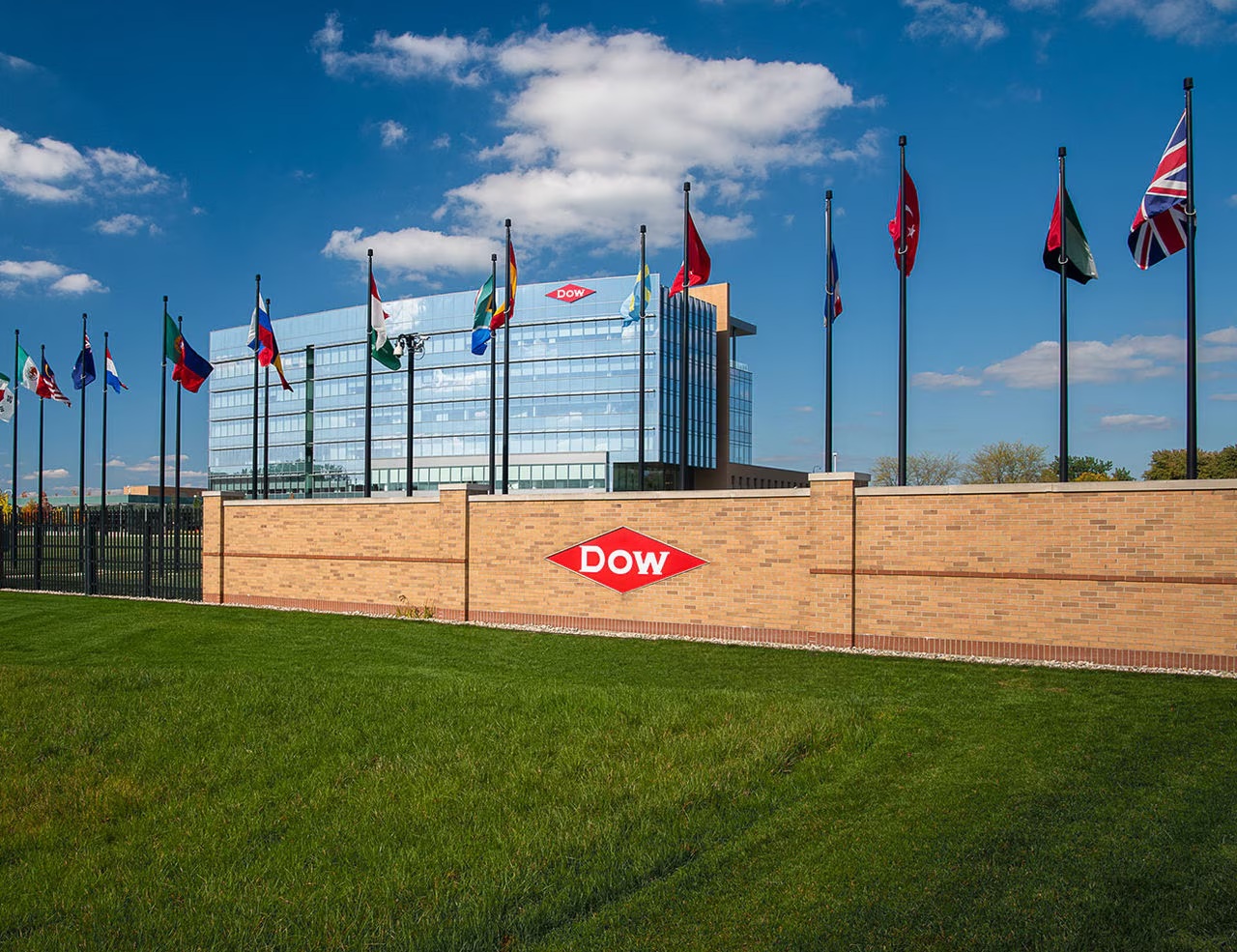Dow Narrows Losses as U.S. Gulf Coast Expansion and Cost Cuts Cushion Global Chemical Slump


Dow Inc on Thursday reported a smaller-than-expected adjusted loss for the third quarter of 2025, supported by cost discipline and the ramp-up of new assets on the U.S. Gulf Coast that offset continued weakness in global chemical prices.
The result, which came against a backdrop of continued macroeconomic gloom and pricing pressures in major international markets, sent the chemical giant’s shares up 10.7% in early trading.
Dow said it posted an adjusted loss of 19 cents per share for the quarter ended Sept. 30, beating analysts’ average estimate of a loss of 29 cents, according to data compiled by LSEG. Net revenue for the period was $9.97 billion, slightly below Wall Street expectations of $10.23 billion.
Register for Tekedia Mini-MBA edition 19 (February 9 – May 2, 2026): big discounts for early birds.
Opening of the Tekedia AI in Business Masterclass registrations.
Join Tekedia Capital Syndicate and co-invest in major global startups.
Register for Tekedia AI Lab: From technical design to deployment.
CEO Jim Fitterling attributed the performance to the company’s cost discipline and operational efficiencies, highlighting the impact of its new polyethylene and alkoxylation assets on the U.S. Gulf Coast.
These assets have expanded Dow’s export capabilities and strengthened its competitive advantage in the production of polymers and specialty chemicals, particularly in regions where the company benefits from cheaper U.S. natural gas feedstocks.
The results mark a modest but significant recovery for the Midland, Mich.-based chemical producer, which has spent much of the past two years grappling with falling global demand, excess inventories and pressure on its margins due to weak industrial activity in China and Europe. The company’s $6.5 billion short-term cash support plan, which includes $1 billion in capital spending reductions and accelerated cost-cutting initiatives, is now more than halfway through its plan. Dow said it was on track to meet its targets by the end of 2026.

Chief Financial Officer Jeff Tate, speaking on the company’s earnings conference call, said the overall macroeconomic landscape “remains largely unchanged,” although early signs of monetary policy changes could support a slight recovery.
“Recent changes in monetary policy and the start of a rate reduction cycle may start to influence demand more positively,” Tate said.
He cautioned, however, that visibility of customer orders still portends a cautious operating environment.

Dow has been restructuring its global presence, particularly in Europe, where energy costs and regulatory hurdles have significantly eroded the competitiveness of heavy industry. The company has begun a strategic review of several of its European assets in 2024, a move that analysts interpret as part of a broader effort to consolidate its operations in more profitable regions such as the United States and the Middle East.
Europe’s chemical sector is struggling with high gas prices and low demand, prompting several producers to consider closures or capacity reductions. Dow said addressing its regional challenges, including European factory closures, is expected to generate an increase in its adjusted core profit of nearly $200 million starting in mid-2026.
The company also warned of potential pricing pressure in Europe, the Middle East, Africa and India, as Asian exporters divert volumes from the US market, where they face anti-dumping duties. According to Dow, this dynamic is reshaping trade flows and intensifying competition in regions that already suffer from low industrial production.
In September, Fitterling noted that the company saw stable volumes, strong export capabilities and low-cost positions in the United States during the third quarter, highlighting the relative resilience of the U.S. market compared to Europe and Asia.
Despite the upbeat investor response, Dow maintained a cautious tone for the remainder of the year, forecasting fourth-quarter net sales of $9.4 billion, below analysts’ forecasts of $10.14 billion. The company said it expects “challenging conditions to persist,” citing the slow recovery in demand in key end markets including packaging, construction and automotive materials.
Dow’s performance reflects a shifting balance in the global chemical industry, where U.S. producers benefit from cheaper raw materials and efficiency gains, while their European peers face a combination of high energy costs and environmental constraints. The company’s strategy appears increasingly focused on leveraging its U.S. Gulf Coast assets to capture export growth and improve margins, thereby positioning itself more competitively for an eventual recovery in global demand.
Still, much depends on how quickly global monetary easing translates into industrial activity. Analysts say Dow’s cautious optimism reflects the chemicals sector’s broader reality: a slow and uneven recovery where cost control and regional repositioning remain crucial for survival.
Dow management also emphasized its commitment to maintaining liquidity and shareholder returns while continuing to invest in operational efficiencies. The company’s recent actions suggest a shift toward greater resilience, balancing short-term cost containment and long-term competitiveness through new production capabilities and technology upgrades.




